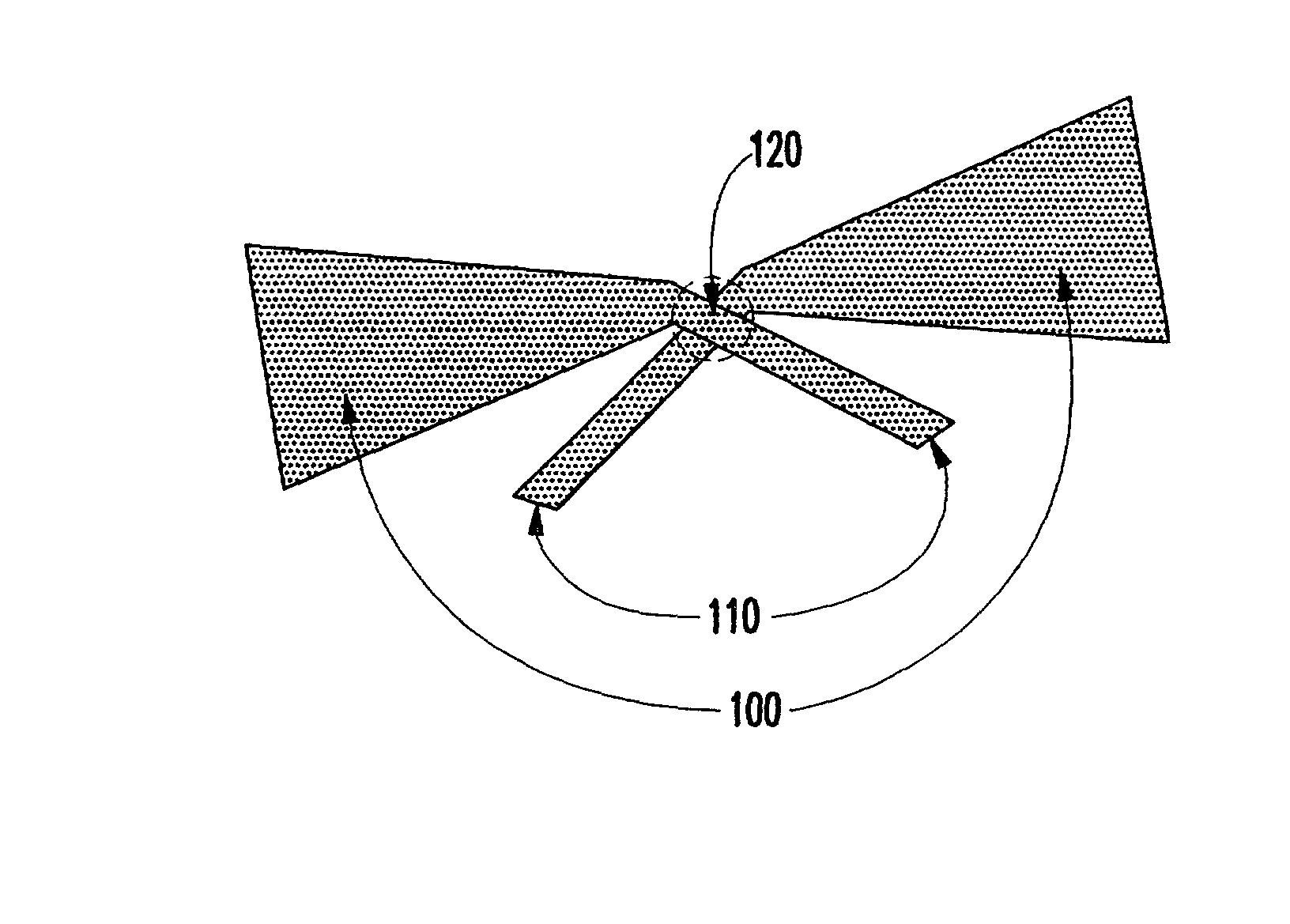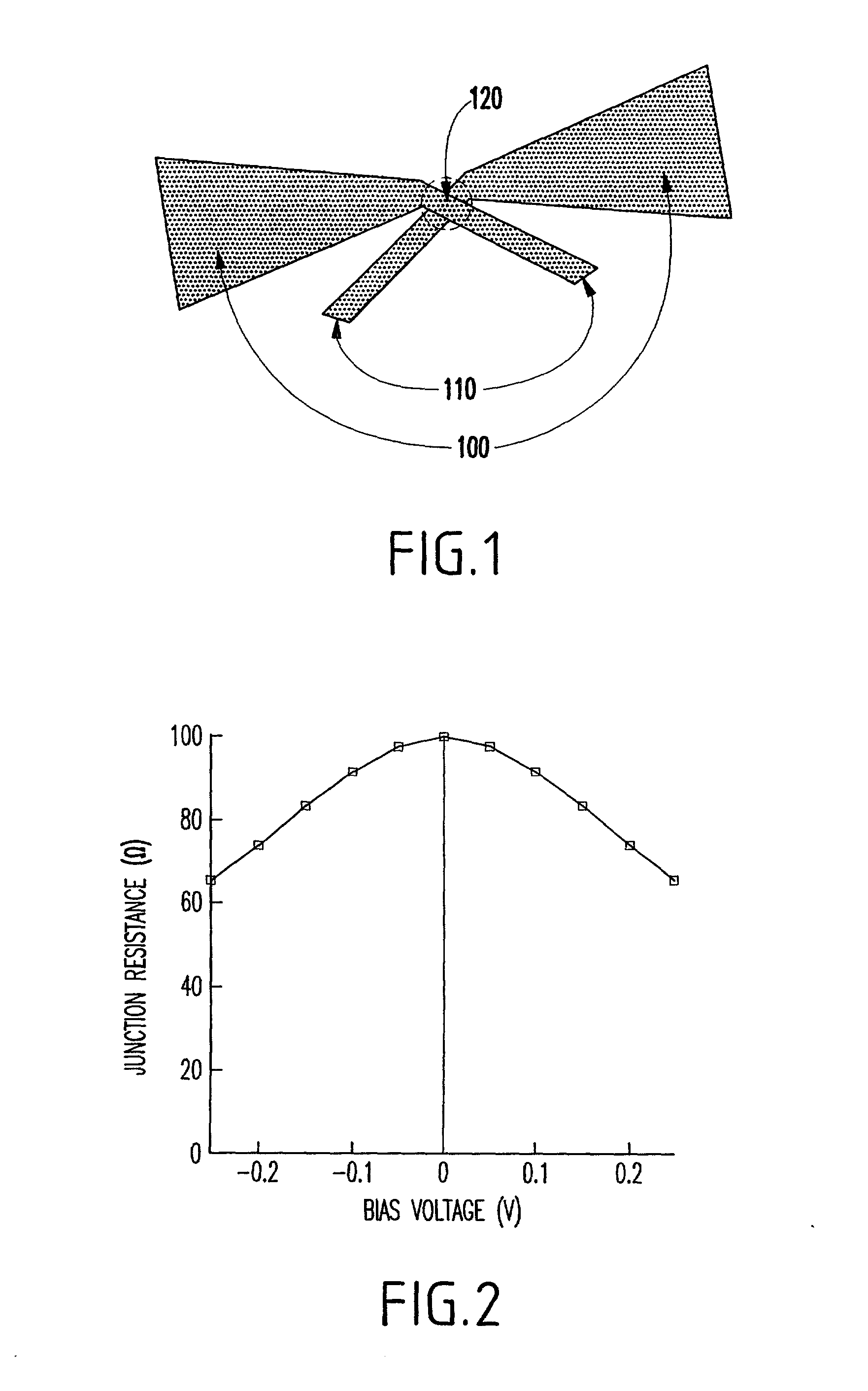Apparatus and method for optical interconnection
a technology of optical interconnection and apparatus, applied in the direction of optical elements, instruments, optical waveguide light guides, etc., can solve the problems of increasing loss of wiring, driving power disadvantage, crosstalk, etc., and achieve the effect of improving the efficiency of optical interconnection
- Summary
- Abstract
- Description
- Claims
- Application Information
AI Technical Summary
Benefits of technology
Problems solved by technology
Method used
Image
Examples
embodiment
PREFERRED EMBODIMENT
[0041] Turning now to FIG. 1, generally a dipole antenna 100 is shown including structures 110 for input / output of baseband signals and a tunnel junction 120 (e.g., formed of Ni--NiO--Ni, etc.).
[0042] The antenna 100 terminated in its characteristic impedance functions as an absorber with an effective cross-section much larger than its geometrical cross-sectional area. This allows the antenna 100 to be an efficient transducer of an incoming wave to an electrical signal at the antenna terminals.
[0043] In addition to the absorption, an antenna also scatters the incoming wave into other plane wave components. Such a small scatterer produces essentially a pure dipole pattern in the far field.
[0044] The optical theorem (also known as the "extinction sum rule") provides that the integral of the interference term between the light scattered by the dipole and the incident beam equals the total absorption plus the total scatter. This allows an estimate of the field scatte...
PUM
 Login to view more
Login to view more Abstract
Description
Claims
Application Information
 Login to view more
Login to view more - R&D Engineer
- R&D Manager
- IP Professional
- Industry Leading Data Capabilities
- Powerful AI technology
- Patent DNA Extraction
Browse by: Latest US Patents, China's latest patents, Technical Efficacy Thesaurus, Application Domain, Technology Topic.
© 2024 PatSnap. All rights reserved.Legal|Privacy policy|Modern Slavery Act Transparency Statement|Sitemap



